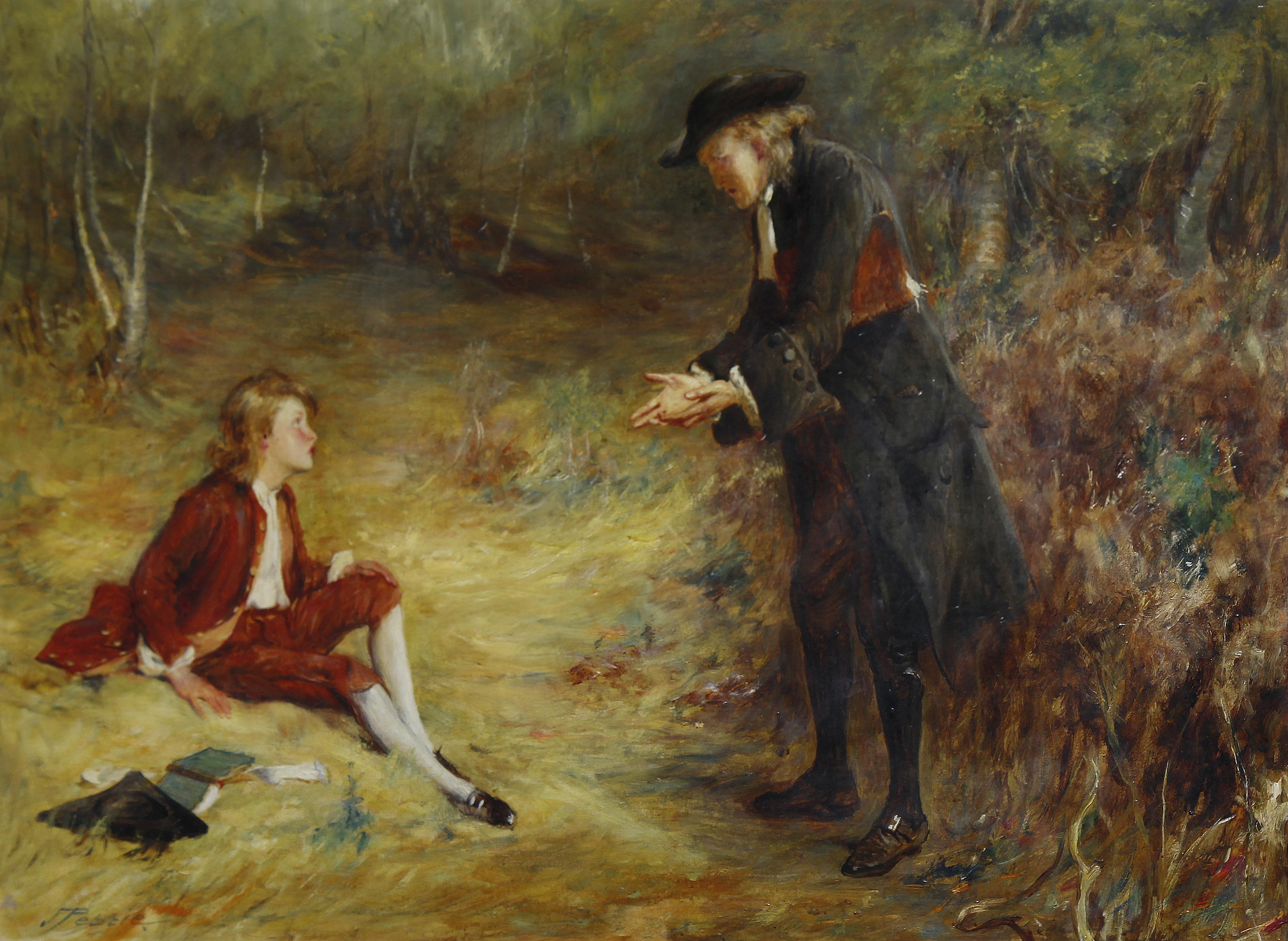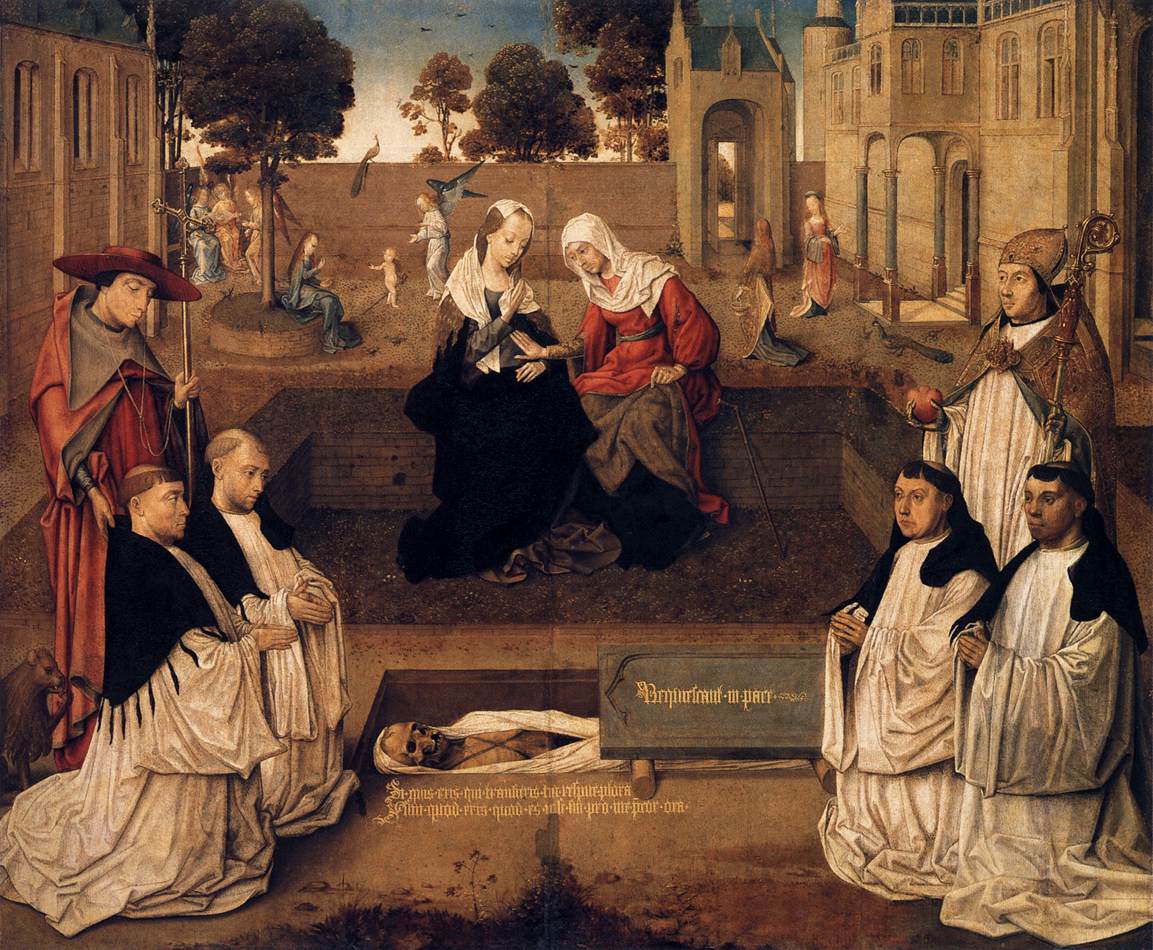|
Anselm Of Havelberg
Anselm of Havelberg (c. 1100 – 1158) was a German bishop, statesman, secular and religious ambassador to Constantinople. He was a Premonstratensian, a defender of his order, a critic of the monastic life of his time, and a theorist of Christian history. According to Friedrich Heer, "the peculiar course of Anselm's life made this much-travelled man the theologian of development, of progress, of the right of novelty in the Church". Life Anselm's birthplace is uncertain. He was a pupil of Norbert of Xanten at Laon, and then was appointed to the Bishopric of Havelberg in the Northern March. Because Havelberg was then controlled by the Polabian Slavs, Anselm's provisional seat was in Jerichow. He served as papal legate and overall commander of the 1147 Wendish Crusade. After Havelberg was recovered by the Saxons during the campaign, cathedral construction was begun. Anselm was sent by Lothair III, Holy Roman Emperor, to Constantinople in 1136. in the hope of a Byzantine allian ... [...More Info...] [...Related Items...] OR: [Wikipedia] [Google] [Baidu] |
Germans
Germans (, ) are the natives or inhabitants of Germany, or sometimes more broadly any people who are of German descent or native speakers of the German language. The Basic Law for the Federal Republic of Germany, constitution of Germany, implemented in 1949 following the end of World War II, defines a German as a German nationality law, German citizen. During the 19th and much of the 20th century, discussions on German identity were dominated by concepts of a common language, culture, descent, and history.. "German identity developed through a long historical process that led, in the late 19th and early 20th centuries, to the definition of the German nation as both a community of descent (Volksgemeinschaft) and shared culture and experience. Today, the German language is the primary though not exclusive criterion of German identity." Today, the German language is widely seen as the primary, though not exclusive, criterion of German identity. Estimates on the total number of Germ ... [...More Info...] [...Related Items...] OR: [Wikipedia] [Google] [Baidu] |
Lothair III, Holy Roman Emperor
Lothair III, sometimes numbered Lothair II and also known as Lothair of Supplinburg ( June 1075 – 4 December 1137), was Holy Roman Emperor from 1133 until his death. He was appointed Duke of Saxony in 1106 and elected King of Germany in 1125 before being crowned emperor in Rome. The son of the Saxon count Gebhard of Supplinburg, his reign was troubled by the constant intriguing of the Hohenstaufens, Duke Frederick II of Swabia and Duke Conrad of Franconia. He died while returning from a successful campaign against the Norman Kingdom of Sicily. Rise to power In 1013, a certain Saxon nobleman named ''Liutger'' was mentioned as a count in or of the Harzgau subdivision of Eastphalia. His grandson Count Gebhard, father of Emperor Lothair, possibly acquired the castle of Süpplingenburg about 1060 via his marriage with Hedwig, a daughter of the Bavarian count Frederick of Formbach and his wife Gertrud, herself a descendant of the Saxon margrave Dietrich of Haldensleben who sec ... [...More Info...] [...Related Items...] OR: [Wikipedia] [Google] [Baidu] |
Augustinians
Augustinians are members of several religious orders that follow the Rule of Saint Augustine, written about 400 A.D. by Augustine of Hippo. There are two distinct types of Augustinians in Catholic religious orders dating back to the 12th–13th centuries: * Various congregations of Canons Regular also follow the Rule of Saint Augustine, embrace the evangelical counsels and lead a semi-monastic life, while remaining committed to pastoral care appropriate to their primary vocation as priests. They generally form one large community which might serve parishes in the vicinity, and are organized into autonomous congregations. * Several orders of friars who live a mixed religious life of contemplation and apostolic ministry. The largest and most familiar is the Order of Saint Augustine (OSA), founded in 1244 and originally known as the Hermits of Saint Augustine (OESA). They are commonly known as the Austin Friars in England. Two other orders, the Order of Augustinian Recollects ... [...More Info...] [...Related Items...] OR: [Wikipedia] [Google] [Baidu] |
Premonstratensians
The Order of Canons Regular of Prémontré (), also known as the Premonstratensians, the Norbertines and, in United Kingdom, Britain and Ireland, as the White Canons (from the colour of their religious habit, habit), is a religious order of canons regular in the Catholic Church. They were founded in Prémontré near Laon in 1120 by Norbert of Xanten, who later became Archbishopric of Magdeburg, Archbishop of Magdeburg. Premonstratensians are designated by O.Praem (''Ordo Praemonstratensis'') following their name. They are part of the Augustinians, Augustinian tradition. Norbert was a friend of Bernard of Clairvaux and was largely influenced by the Cistercians, Cistercian ideals as to both the manner of life and the government of his order. As the Premonstratensians are not monks but canons regular, their work often involves preaching and the exercising of pastoral ministry; they frequently serve in parishes close to their abbeys or priories. History The order was founded in 1120 ... [...More Info...] [...Related Items...] OR: [Wikipedia] [Google] [Baidu] |
Charity (practice)
Charity is the Volunteering, voluntary provision of assistance to those in need. It serves as a Humanitarianism, humanitarian act, and is unmotivated by self-interest. Various Philosophy, philosophies about charity exist, with frequent associations with religion. Etymology The word ''charity'' originated in late Old English to mean a "Christianity, Christian love for one's fellows", and until at least the beginning of the 20th century, this meaning remained synonymous with charity. Apart from this original meaning, ''charity'' is etymologically linked to Christianity, with the word originally entering the English language through the Old French word , which derived from the Latin , a word commonly used in the Vulgate New Testament to translate the Greek word (), a distinct form of Love (religious views)#Christian, love. Over time, the meaning of ''charity'' has evolved from "Christian love" to "providing for those in need; generosity and giving" (cf. ''offertory''), a transiti ... [...More Info...] [...Related Items...] OR: [Wikipedia] [Google] [Baidu] |
Sacrament
A sacrament is a Christian rite which is recognized as being particularly important and significant. There are various views on the existence, number and meaning of such rites. Many Christians consider the sacraments to be a visible symbol of the reality of God, as well as a channel for God's grace. Many denominations, including the Catholic, Lutheran, Presbyterian, Anglican, Baptist, Methodist, and Reformed, hold to the definition of sacrament formulated by Augustine of Hippo: an outward sign of an inward grace, that has been instituted by Jesus Christ. Sacraments signify God's grace in a way that is outwardly observable to the participant. The Catholic Church, Hussite Church and the Old Catholic Church recognize seven sacraments: Baptism, Penance (Reconciliation or Confession), Eucharist (or Holy Communion), Confirmation, Marriage (Matrimony), Holy Orders, and Anointing of the Sick (Extreme Unction). The Eastern Churches, such as the Eastern Orthodox Church an ... [...More Info...] [...Related Items...] OR: [Wikipedia] [Google] [Baidu] |
Sermon
A sermon is a religious discourse or oration by a preacher, usually a member of clergy. Sermons address a scriptural, theological, or moral topic, usually expounding on a type of belief, law, or behavior within both past and present contexts. Elements of the sermon often include exposition, exhortation, and practical application. The act of delivering a sermon is called preaching. In secular usage, the word ''sermon'' may refer, often disparagingly, to a lecture on morals. In Christian practice, a sermon is usually preached to a congregation in a place of worship, either from an elevated architectural feature, known as a pulpit or an ambo, or from behind a lectern. The word ''sermon'' comes from a Middle English word which was derived from Old French, which in turn originates from the Latin word meaning 'discourse.' A ''sermonette'' is a short sermon (usually associated with television broadcasting, as stations would present a sermonette before Sign-off (broadcast) ... [...More Info...] [...Related Items...] OR: [Wikipedia] [Google] [Baidu] |
Contemplation
In a religious context, the practice of contemplation seeks a direct awareness of the Divinity, divine which Transcendence (religion), transcends the intellect, often in accordance with religious practices such as meditation or contemplative prayer, prayer. Etymology The word ''contemplation'' is derived from the Latin word ''contemplatio'', ultimately from the Latin word ''templum'', a piece of ground consecrated for the taking of auspices, or a building for worship. The latter either derives from the Proto-Indo-European language, Proto-Indo-European root ''*tem-'' ("to cut"), on notion of "place reserved or cut out", or from the root *''temp''- ("to stretch, string"), thus referring to a cleared (measured) space in front of an altar. The Latin word ''contemplatio'' was used to translate the Greek language, Greek word ''θεωρία'' (''theoria, theōría''). Greek philosophy Contemplation was an important part of the philosophy of Plato; Plato thought that through contempl ... [...More Info...] [...Related Items...] OR: [Wikipedia] [Google] [Baidu] |
Benedictines
The Benedictines, officially the Order of Saint Benedict (, abbreviated as O.S.B. or OSB), are a mainly Christian mysticism, contemplative Christian monasticism, monastic Religious order (Catholic), order of the Catholic Church for men and for women who follow the Rule of Saint Benedict. Initiated in 529, they are the oldest of all the religious orders in the Latin Church. The male religious are also sometimes called the Black Monks, especially in English speaking countries, after the colour of their religious habit, habits, although some, like the Olivetans, wear white. They were founded by Benedict of Nursia, a 6th-century Italian monk who laid the foundations of Benedictine monasticism through the formulation of his Rule. Benedict's sister, Scholastica, possibly his twin, also became a religious from an early age, but chose to live as a hermit. They retained a close relationship until her death. Despite being called an order, the Benedictines do not operate under a single ... [...More Info...] [...Related Items...] OR: [Wikipedia] [Google] [Baidu] |
Canon Regular
The Canons Regular of St. Augustine are Catholic priests who live in community under a rule ( and κανών, ''kanon'', in Greek) and are generally organised into religious orders, differing from both secular canons and other forms of religious life, such as clerics regular, designated by a partly similar terminology. As religious communities, they have laybrothers as part of the community. At times, their Orders have been very popular: in England in the 12th century, there were more houses of canons (often referred to as an abbey or canonry) than monasteries of monks. Preliminary distinctions All canons regular are to be distinguished from secular canons who belong to a resident group of priests but who do not take public vows and are not governed in whatever elements of life they lead in common by a historical rule. One obvious place where such groups of priests are required is at a cathedral, where there were many Masses to celebrate and the Divine Office to be praye ... [...More Info...] [...Related Items...] OR: [Wikipedia] [Google] [Baidu] |
Basil Of Achrida
Basil (, ; , ; ''Ocimum basilicum'' (, )), also called great basil, is a culinary herb of the family Lamiaceae (mints). It is a tender plant, and is used in cuisines worldwide. In Western cuisine, the generic term "basil" refers to the variety also known as Genovese basil or sweet basil. Basil is native to tropical regions from Central Africa to Southeast Asia. In temperate climates basil is treated as an annual plant, but it can be grown as a short-lived perennial or biennial in warmer horticultural zones with tropical or Mediterranean climates. There are many varieties of basil including sweet basil, Thai basil (''O. basilicum'' var. ''thyrsiflora''), and Mrs. Burns' Lemon (''O.'basilicum var. citriodora''). ''O. basilicum'' can cross-pollinate with other species of the ''Ocimum'' genus, producing hybrids such as lemon basil (''O. × citriodorum'') and African blue basil (''O. × kilimandscharicum''). Description Basil is an annual, or sometimes perennial, herb. De ... [...More Info...] [...Related Items...] OR: [Wikipedia] [Google] [Baidu] |








